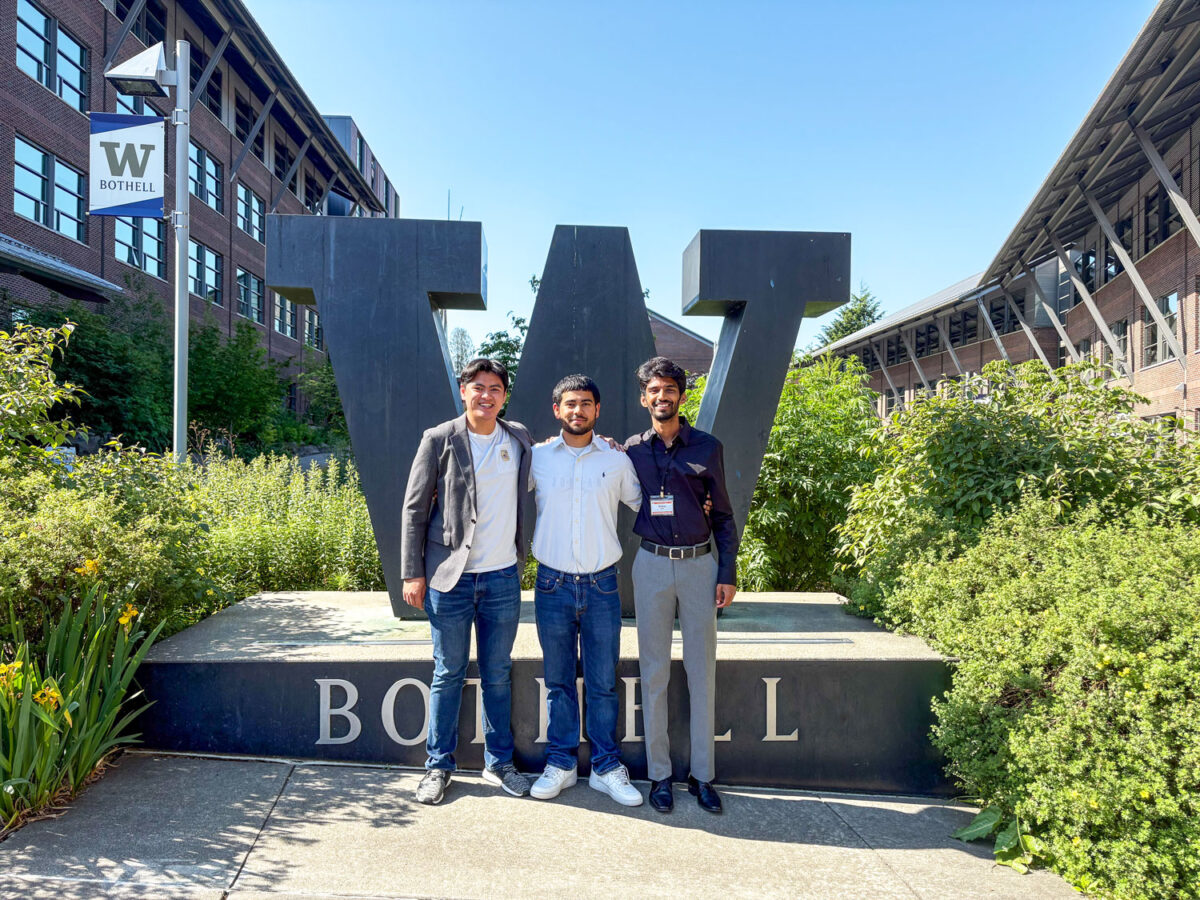Photos by Mark Stone
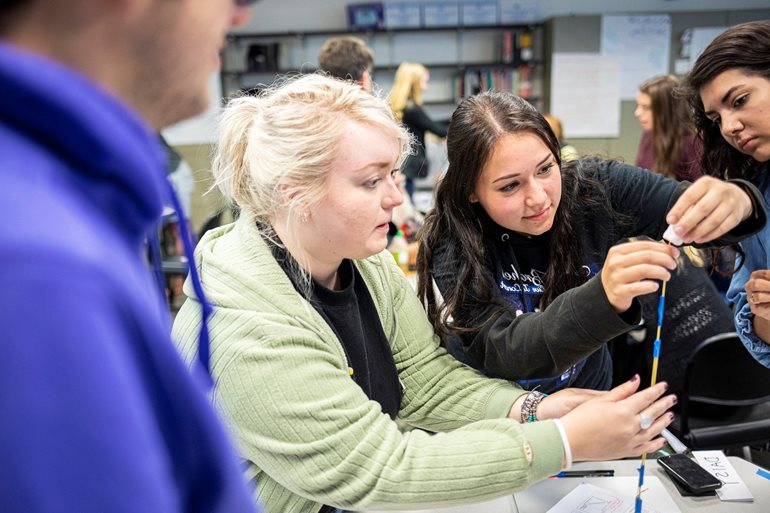
The marshmallow challenge is a team-building exercise that gained popularity through a 2010 TED talk that has been viewed nearly six million times. You give each team of four people 20 sticks of uncooked spaghetti, 1 yard of tape, 1 yard of string and then allow them 18 minutes to build the tallest possible structure with a marshmallow on top. Cheryl Faye Gordon, a lecturer in the University of Washington Bothell’s School of Educational Studies makes the marshmallow challenge part of her course, Theories of Learning, Culture and Identity, which she teaches once or twice a year.
Harder than thought
The students who took the challenge Oct. 14 had a typical initial reaction. How hard could this be? But, as with Gordon’s previous courses and as seen in the TED talk, the students waited too long to put the marshmallow on top.
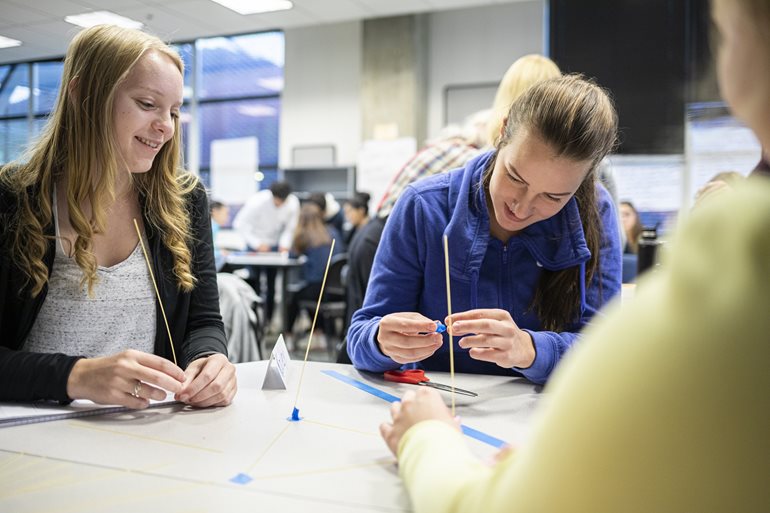
“They wait to the very last second,” Gordon said. “I’m usually calling time, they’re putting the marshmallow on top, and it falls over.” In her class of nine teams, only one built a spaghetti-stick structure that could hold a marshmallow. The TED talk’s design lesson was about the value of building prototypes — the iterative process. Gordon draws a different lesson.
Metacognition
“We use the challenge to talk about the idea of transfer: How do you take knowledge from one context and use it in another?” Gordon said. “I want students to think about the strategies they use.”
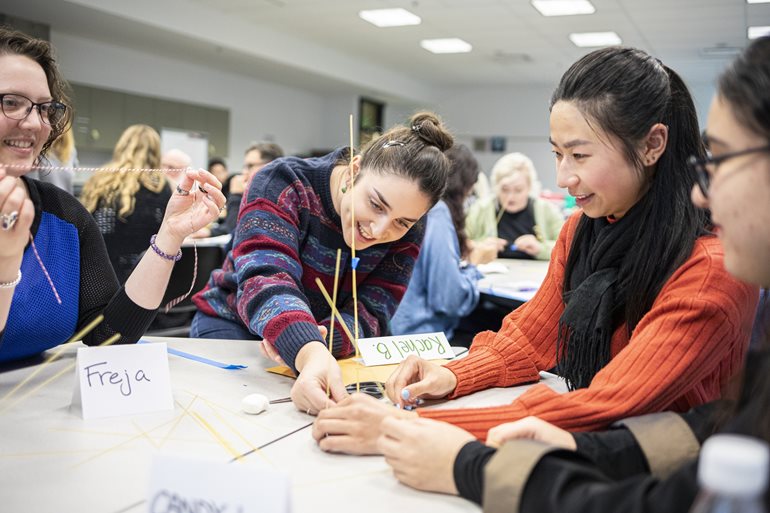
After talking about metacognition — recognizing the thought process — Gordon showed the class the TED talk and then gave her students a slightly different challenge. She gave them popsicle sticks, half the tape, half the string and only eight minutes to build a structure to support a marshmallow. This time, they did not underestimate the weight of a marshmallow. And with sturdier popsicle sticks, all nine teams built successful marshmallow-holding structures. The lesson for them as educators, Gordon said, was learning how to adapt a strategy to a new situation. In practice, for example, teachers could show pupils who know how to solve one math problem how to transfer that strategy to a slightly different problem. The marshmallow challenge was. It’s an opportunity to translate theory into practice and to model classroom technique.
Deeper learning experience
Gordon said her students like the challenge because it’s engaging and fun. Two Educational Studies majors who are preparing to become teachers, Lauren Piloco (’21) and Kennedy Michael (’22), said they’ll remember the marshmallow class.
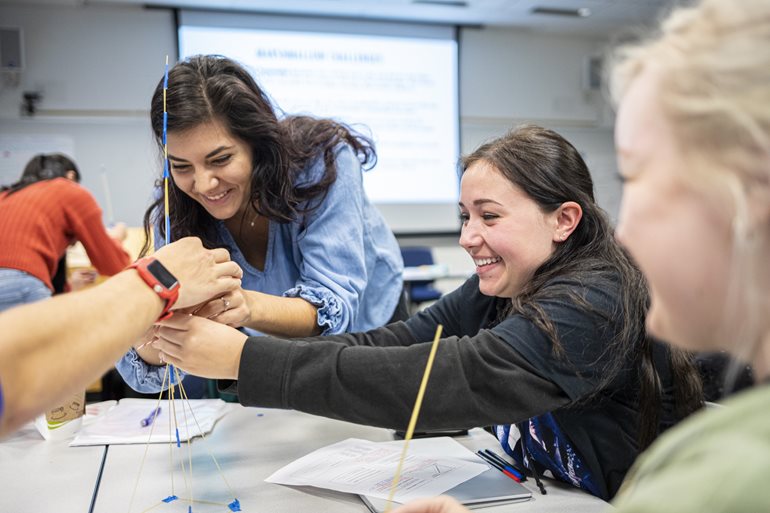
“That’s going to stick with us because we did it hands-on,” said Michael. Piloco said, “We were involved in actually physically learning about what we were being taught.” They first thought they had the challenge figured out, not anticipating the marshmallow’s weight, and failed. After watching the TED talk, they saw a strategy, transferred it to the popsicle sticks and succeeded. “That gave us a really cool way to think about that and how our brain works,” said Michael, who is a classroom assistant with preschool and kindergarten students in Mukilteo. Gordon’s class has already changed her behavior. “It gives me different approaches to interact and teach them,” she said. Piloco and Michael said the marshmallow challenge was typical of Gordon’s fast-moving course, and they often leave a two-hour class wondering where the time went.



